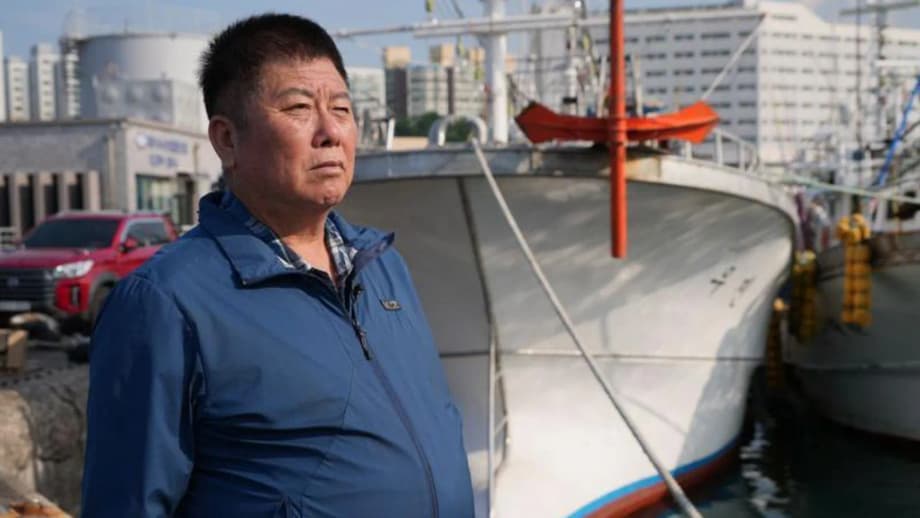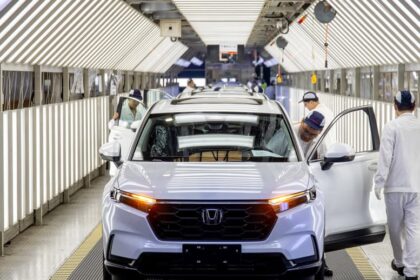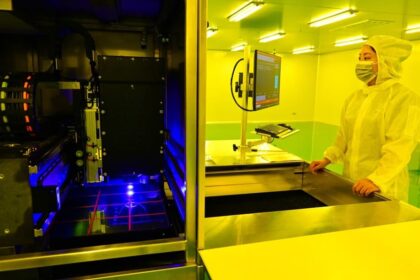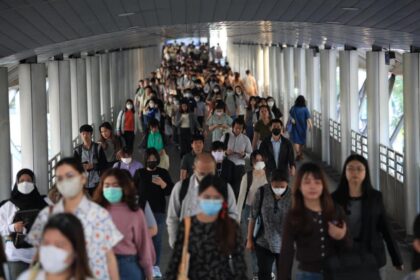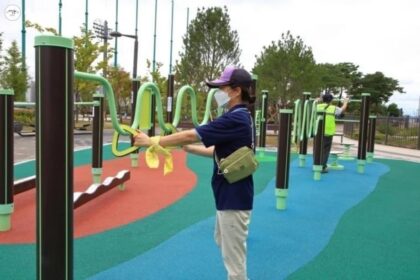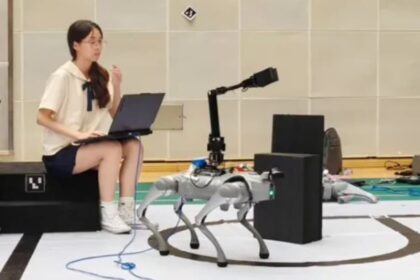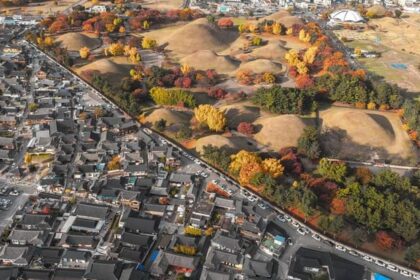A deadly season at sea
The message reached Jeju Island before dawn. A fishing boat had gone over in rough water after a powerful wave struck from two directions, forming a whirlpool that flipped the vessel. Five of the ten crew, asleep below deck, never made it out. The owner, Hong Suk hui, also head of the Jeju Fishing Boat Owners Association, rushed to the shore and learned that his hopes for a long voyage had ended in tragedy.
“When I heard the news, I felt like the sky was falling.”
Fatalities at sea climbed sharply last year. Official figures show 164 people were killed or went missing in South Korean waters, a jump of about 75 percent from the year before. Most were fishermen on boats that sank or capsized. Many skippers say the weather itself feels different, with faster changing winds and a sea that can turn chaotic without warning.
“The weather has changed, it is getting windier every year. Whirlwinds pop up suddenly. We fishermen are convinced it is down to climate change,” Mr Hong said.
At Jeju’s main harbor, the mood is a mix of routine and worry. Crews dart between quayside and deck with fuel and gear, while owners pace and check radios, charts, and forecasts. Hairtail, the silvery fish that used to anchor incomes here, is now harder to find. Boats chase it farther from shore, sometimes as far south as Taiwan. The added distance can erase the option to return quickly when a warning is issued.
“I am always afraid something might happen to the boat, the risks have increased so much. The winds have become more unpredictable and extremely dangerous,” said 54 year old owner Kim Seung hwan.
Are warmer seas making storms more deadly?
South Korea’s surrounding seas have warmed faster than the global average. From 1968 to 2024, the average sea surface temperature rose by about 1.58C, more than double the global rise of roughly 0.74C. Warmer water adds energy to the atmosphere and the ocean, which can intensify tropical systems like typhoons and create conditions for sudden squalls and dangerous waves that catch small vessels off guard.
Government investigators who examined recent accidents found the marine environment around the Korean Peninsula has become riskier for fishing. The number of marine weather warnings for gales, storm surges, and typhoons rose by about 65 percent between 2020 and 2024. Investigators said small fishing vessels, which are now traveling farther as fish move, face the highest danger on long, rough trips.
Professor Gug Seung gi, who led the accident review, said: “Unpredictable weather is leading to more boats capsizing, especially small fishing vessels that are going further out and are not built for such long, rough trips.”
Scientists caution that not every trend is clear yet. There is growing evidence that climate change is creating conditions that favor sudden wind gusts and marine heatwaves, but some patterns still require longer observation.
Professor Kim Baek min, a climate scientist at Pukyong National University, noted: “Climate change is making strong, sudden wind gusts more likely, but more research and long term data is needed before we can establish a clear trend.”
Where have the fish gone?
Warmer seas are rearranging the map of marine life. Many species move toward cooler water or deeper layers. Fishermen across the south coast say hairtail and other staples have shifted offshore and southward. That forces longer trips and narrows the window to seek shelter when a storm approaches.
After seeing hairtail thin out near Jeju, Mr Kim said: “Since we are operating farther away, it is not always possible to return quickly when there is a storm warning. If we stayed closer to shore it would be safer, but to make a living we have to go farther out.”
Catch data tell a stark story. Over the past decade, squid landings in South Korean waters plunged by about 92 percent. Anchovy catches fell by about 46 percent. On one recent outing, anchovy skipper Park Hyung il hauled up nets packed with jellyfish, not fish. The two boxes of anchovies he managed to separate would not cover fuel, let alone wages.
“In the past, we would fill 50 to 100 of these baskets in a single day. This year the anchovies have vanished and we are catching more jellyfish than fish,” Captain Park said.
“The haul is basically worthless. The sea is a mess, nothing makes sense anymore.”
Recent research aligns with what fishers see. A long view of coastal and offshore catches shows a shift from cold water species like walleye pollock to warm water species as sea temperatures rise. A multi year environmental DNA survey using underwater drones detected 167 fish species across the Korean coastline and a growing presence of tropical and subtropical fish, especially around Jeju. The same monitoring picked up 13 species not previously recorded in South Korean waters, an early sign that warmer water is inviting new arrivals.
Changes extend from fish schools to the sea floor. Around Jeju, scientists have documented a transformation in sessile benthic communities, with coral species such as Alveopora japonica expanding while some temperate macroalgae decline. The distribution of these foundation species is strongly influenced by winter sea surface temperature, water clarity, nutrients, and local water movement. The result is a different habitat mosaic for fish and invertebrates than a generation ago.
Aging crews, migrant labor, and a safety gap
Fishing is graying fast. In 2023, almost half of South Korean fishers were older than 65, up from less than one third a decade earlier. Younger workers see long hours, volatile income, and a high level of danger. To keep boats running, many skippers hire deckhands from Vietnam and Indonesia. Some crews receive limited safety training, and language barriers can make it hard to follow urgent commands in rough weather.
Advocates warn that the pressures now stack on top of one another, increasing the chance of disaster.
Woojin Chung, South Korea’s representative at the Environmental Justice Foundation, said: “When you combine more extreme weather with the pressure to travel further, the increased fuel costs this brings, and the need to rely on cheap, untrained foreign labor, you have a higher chance of meeting disaster.”
Families are pushing for better risk decisions on land as well as at sea. In February, a large trawler sank off Yeosu, killing 10 crew on a day so cold that falling into the water likely meant hypothermia. Smaller boats had been held back, but the trawler sailed. The cause remains unclear. Ean, whose 63 year old father Young mook died, believes owners have a duty to weigh the risks and maintain older boats.
“Ultimately it is their call when to go out. Companies have insurance, so they get compensated after a boat sinks, but our loved ones cannot be replaced,” she said.
What the science says about Korea’s fisheries
Studies of South Korean fisheries over recent decades point to a tight link between climate factors and production trends. One national analysis using data from 1993 to 2023 found that rising sea surface temperatures, higher carbon dioxide levels, and precipitation variability are associated with long term declines in coastal and offshore catches. In the short run, past production helps predict current output, and temperature shocks can ripple through stocks with a delay. The mechanisms include shifts in where fish live, failures during spawning and early life stages, and food web disruptions that favor some species and disadvantage others.
A separate vulnerability assessment looked at 36 species and 24 fisheries using sensitivity and exposure to future warming as the core measures, with exposure based on a high emissions scenario by 2100. Offshore fleets ranked as more vulnerable than coastal fleets. Fisheries that depend heavily on species with low productivity, limited movement, or narrow habitat ranges face the greatest risk as the ocean warms. The authors argue that management should prioritize these fisheries and integrate climate stress into quotas, seasons, and gear rules.
Global context reinforces these findings. Marine heatwaves have grown more frequent over the past three decades, and warming shifts the ranges of commercial stocks. Some fish move across national lines, which can lead to disputes over how to share catches, as seen with North East Atlantic mackerel. Fisheries that plan for changing baselines, monitor stock movements closely, and coordinate with neighbors are better able to keep catches at sustainable levels.
Species on the move
Cold water species such as walleye pollock have thinned or vanished from key South Korean grounds, while warmer water species gain space. Squid, an economic pillar for many ports, have struggled as ocean conditions change. Sardine and anchovy volumes vary with temperature and currents, and recent anchovy declines have hit small trawlers hard. Around Jeju, warmer water has brought a rise in tropical and subtropical visitors, altering local community structure and catch composition.
Offshore fleets face higher risk
Working far from harbor increases exposure to fast changing storms, longer return times, and equipment failures that are harder to fix at sea. The vulnerability study found offshore fleets more exposed to climate signals because of distance, target species profiles, and limited fallback options. That picture matches what many captains now describe on the water.
Economy on the hook
Climate stress at sea is showing up at the market. Repeated heat waves drive higher mortality in aquaculture pens, especially for sashimi grade flatfish and rockfish, and can tighten supply. Government data indicate that the fish and shellfish price index rose 7.6 percent in July from a year earlier. Yellow croaker prices jumped by more than 13 percent, while mackerel and oysters climbed by more than 12 percent. Wholesale flatfish prices surged by about 21 percent over the same period. The overall inflation rate was much lower, which means seafood is stretching household budgets faster than many other foods.
Imports of some seafood items have increased as domestic production falters in certain species, a shift that mirrors changes in the catch. For fishers who remain at sea, longer trips add fuel costs and heighten the risk that weather shutters ports before they can land. For consumers, price swings complicate menu planning and make favorite dishes harder to afford during peak heat.
Policymakers are steering more funds to adaptation, including programs to develop smart aquaculture models, support automation at existing fish farms, and finance fisheries restructuring with vessel reductions. The aim is to stabilize supply, protect safety, and buy time for ecosystems to adjust.
Safety reforms and adaptation ideas
Authorities are moving to reduce risk while accepting that the ocean will keep changing. A government taskforce has urged owners to install safety ladders, require life jackets at all times on deck, and ensure mandatory safety training for all foreign crew. The same group wants faster, more localized weather updates to reach skippers at sea, paired with improvements to search and rescue coverage. Inspectors have stepped up unannounced checks of safety equipment on working boats.
Local governments are also experimenting. Some offer small payments for jellyfish landed, both to clean nets and to remove biomass that clogs coastal waters. Squid skippers are being offered loans and retirement packages to prevent bankruptcy during lean seasons. Vessel reduction programs aim to lower effort where stocks remain under pressure.
Adaptation can also mean changing what is grown and where. South Korea is already a world leader in seaweed, especially gim. Seaweed aquaculture requires no feed, can improve water quality, and can provide a steady income that is less exposed to storm risks than mobile fishing. Continued investment in seed quality, farm design, and new markets can open additional jobs along the coast while easing pressure on wild stocks.
Better data will help. Environmental DNA sampling with underwater drones is emerging as a fast way to track which species are present and where. Using these tools in stock assessments can speed warnings when warm water intruders arrive or when key life stages are at risk. Policymakers are considering climate aware harvest rules, more marine protected areas in nursery and spawning grounds, and stock enhancement that favors resilient species suited to future conditions.
Global ties, from Jeju to Antarctica
South Korea’s fleets also operate far from home. In 2024, around half a million tonnes of krill were taken from Antarctic waters by boats from Norway, China, and South Korea. Krill feed whales, seals, penguins, and seabirds, and they play a role in carbon storage by transporting carbon to the deep sea. The fishery has become more lucrative as krill oil and salmon feed markets expand, but scientists warn that overfishing and warming seas can erode a keystone of the Southern Ocean. International talks to update conservation measures have struggled in recent years, which increases the risk that catches concentrate in sensitive areas.
South Korea’s seafood future is linked to these wider decisions. Shifting stocks cross boundaries, new markets reshape demand, and climate change tests rules designed for a cooler ocean. Agreements that share fish fairly and keep catches within science based limits, paired with strong domestic safety and training standards, will go a long way toward protecting coastal livelihoods.
Key Points
- Fatalities at sea in South Korea rose to 164 last year, up about 75 percent from the year before, with most deaths on fishing vessels.
- Sea surface temperatures around Korea have increased by about 1.58C since 1968, more than double the global average rise.
- Marine weather warnings increased by around 65 percent between 2020 and 2024, adding risk for small boats operating farther offshore.
- Squid landings have fallen by roughly 92 percent in the past decade, while anchovy catches are down about 46 percent.
- Research shows long term links between rising temperatures, higher carbon dioxide, changing rainfall, and declines in fisheries production.
- Offshore fleets are more vulnerable than coastal fleets, given target species profiles and longer distances from safe harbors.
- Aging crews and reliance on migrant labor, combined with training gaps and language barriers, raise safety concerns.
- Reforms include mandatory life jackets, safety ladders, training for foreign crew, better weather data, and improved search and rescue.
- Heat waves and aquaculture losses are pushing seafood prices higher, with yellow croaker, mackerel, and oysters seeing double digit gains.
- Expansion of seaweed farming, smarter aquaculture, and climate aware management offer practical paths to keep coastal communities working.


